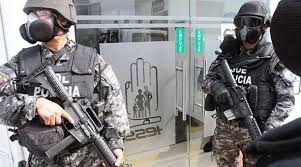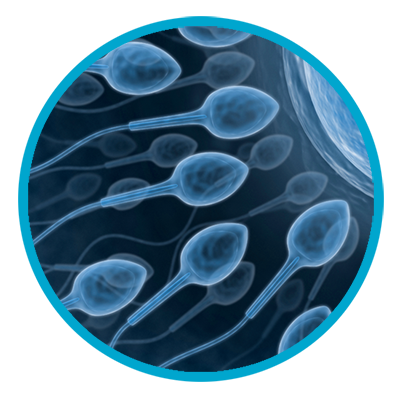COVID-19
The 2019.3 coronavirus disease better known as COVID-19 note 1 and incorrectly called coronavirus pneumonia, note 2 is an infectious disease caused by SARS-CoV-2.

It produces flu-like or cold-like symptoms, including fever, cough, dyspnea, myalgia, and fatigue.In severe cases, it is characterized by pneumonia, acute respiratory distress syndrome, sepsis, and septic shock leading to about 3.75% of those infected to death according to the WHO. There is no specific treatment; the main therapeutic measures are to relieve symptoms and maintain vital functions
The transmission of SARS-CoV-2 occurs through small droplets - Flügge microdrops - that are emitted when speaking, sneezing, coughing or exhaling, that when they are released by a carrier (who may not have symptoms of the disease or may be incubating it ) pass directly to another person through inhalation, or remain on the objects and surfaces that surround the emitter, and then, through the hands, which pick it up from the contaminated environment, come into contact with the oral, nasal and ocular mucous membranes, by touching your mouth, nose, or eyes. The latter is the main route of spread, since the virus can remain viable for up to days in the fomites (any object devoid of life, or substance, which if contaminated with a pathogen is capable of transferring it from one individual to another).
Symptoms appear between two and fourteen days, averaging five days, after exposure to the virus. There is limited evidence to suggest that the virus could be transmitted one or two days before symptoms occur, as viremia reaches a peak at the end of the incubation period. The contagion can be prevented with frequent hand washing, or failing that, disinfecting them with alcohol gel, covering the mouth when coughing or sneezing, either with bleeding (sunken part of the arm opposite the elbow) or with a handkerchief and avoiding close contact with other people, among other prophylactic measures, such as the use of masks. In March, the WHO advised against the use of surgical masks by the healthy population, in April the WHO considered that it was an acceptable measure in some countries. However, certain experts recommend the use of surgical masks based on studies on H1N1 influenza, where show they could help reduce exposure to the virus. CDC recommends the use of cloth, non-medical masks
Spread of the disease
Following the first COVID-19 outbreak in Wuhan in December 2019, where Chinese authorities confirmed 41 cases detected between December 8 and January 2, 2020,35 the city stopped reporting cases until January 19, when 17 more cases were confirmed. By then, the first COVID-19 cases outside of China had already been reported: two in Thailand and one in Japan.50 The rapid spread of the disease caused the World Health Organization, on January 30, 2020, to declare it a health emergency of international concern, based on the impact that the virus could have in underdeveloped countries with less health infrastructure. By that date, the disease had been detected in all provinces of mainland China, and cases were diagnosed in 15 other countries.
Patient zero
An index case or "zero patient" is the case that gives rise to the attention of the researcher and originates actions to know a focus of infection; corresponds to the first case confirmed by the health authority and leads (indicates) to a localized outbreak
Patient one
Sometimes the first case of COVID-19 identified by the health system (index case or patient 0) does not coincide with the case that gives rise to the epidemic. The "authentic index case" or "primary case" would be the first to initiate the epidemic outbreak.
Fatality rate
According to a study of COVID-19 deaths in the Chinese province of Hubei, out of a total of 72,314 patient records, 44,672 (61.8%) were confirmed as COVID-19 cases. Among them, 1023 deaths were registered, which represents a mortality rate of 2.3%. This data, however, may be an overestimation of the real mortality because many people may have been infected, but do not present symptoms, and therefore not having been accounted for. Other studies indicate that apparent mortality was higher in the early stages of the outbreak (17.3% for symptomatic cases between January 1 and 10), and that it was reduced over time to 0.7% for patients with onset of symptoms after February 1, 2020.
Immunization and reinfection
Most patients infected with the SARS-CoV-2 virus remain immunized for at least five months, according to data from a British study published in January 2021. In that study, it was found that people who had previously contracted the virus ( verified by PCR or serological analysis) had a much lower probability (83%) of being infected again than those who had not been previously exposed to the virus. In addition, in the case of reinfection, those previously infected tended not to present symptoms (78% of the cases) while the absence of symptoms only occurred in 34% of those not previously infected. Another study has confirmed the presence of one of the antibodies against the virus three months after infection in 99% of cases and six months later in 88%. Patients without this antibody are therefore not vulnerable to the virus, since other antibodies or other defenses can confer immunity on them as well. In total, it is estimated that having contracted the virus provides a natural immunization against COVID-19 symptoms of 94%, which is comparable to that of the best vaccines. However, like vaccines, having passed the virus does not guarantee that a person will not be able to contract it and infect it again, for which the health authorities recommend that all those previously infected continue to apply the usual prevention methods.
Temas relacionados:
digital newspaper
school newspaper
digital magazine
free newspaper
create digital newspaper
digital publications
digital content
create free digital newspaper
create free school newspaper
Esta web se reserva el derecho de suprimir, por cualquier razón y sin previo aviso, cualquier contenido generado en los espacios de participación en caso de que los mensajes incluyan insultos, mensajes racistas, sexistas... Tampoco se permitirán los ataques personales ni los comentarios que insistan en boicotear la labor informativa de la web, ni todos aquellos mensajes no relacionados con la noticia que se esté comentando. De no respetarse estas mínimas normas de participación este medio se verá obligado a prescindir de este foro, lamentándolo sinceramente por todos cuantos intervienen y hacen en todo momento un uso absolutamente cívico y respetuoso de la libertad de expresión.
No hay opiniones. Sé el primero en escribir.
Guardiola: &34;At Barça I needed three pistols and 100 bullets to lose the ball&34;













